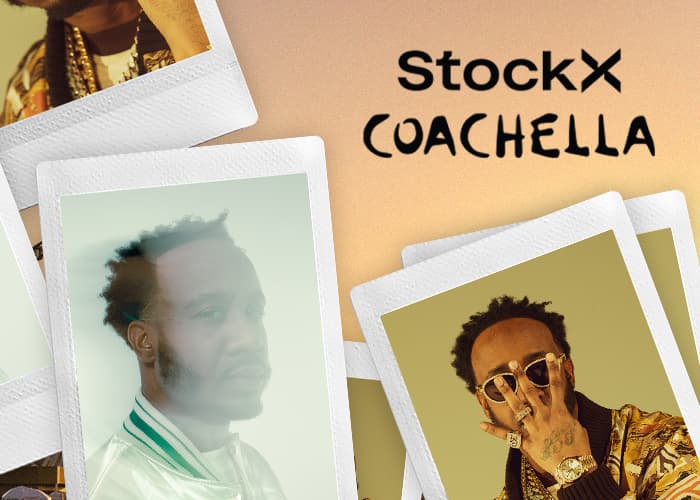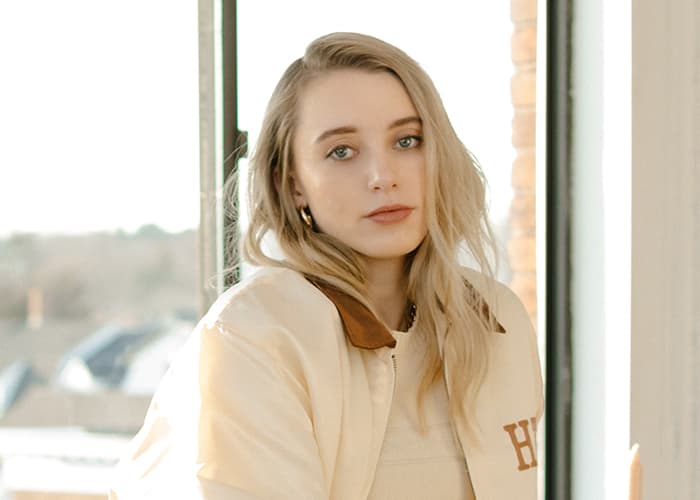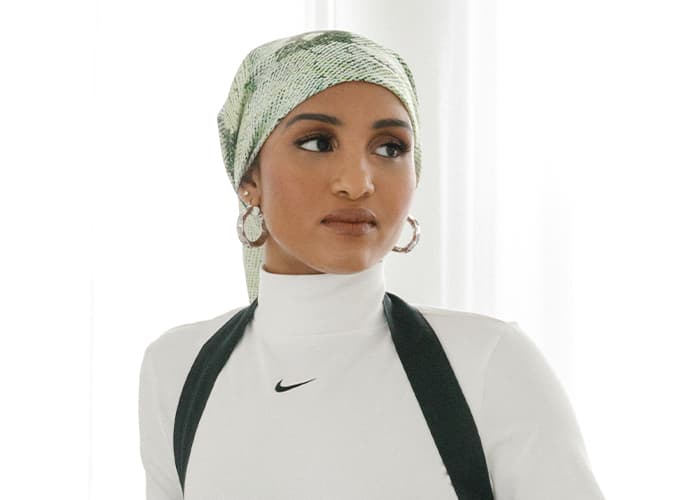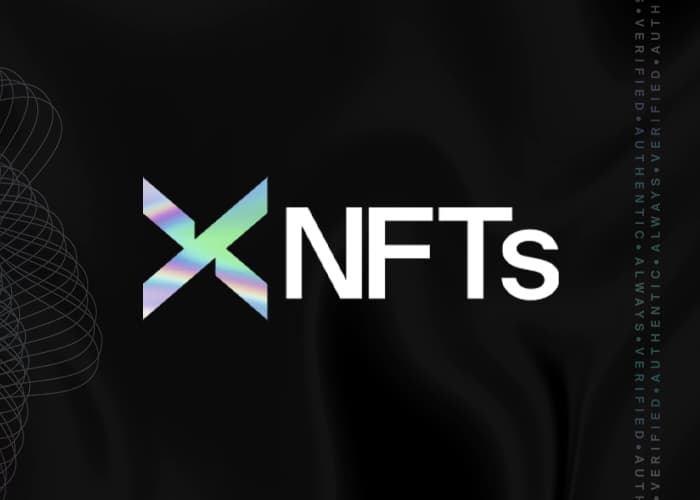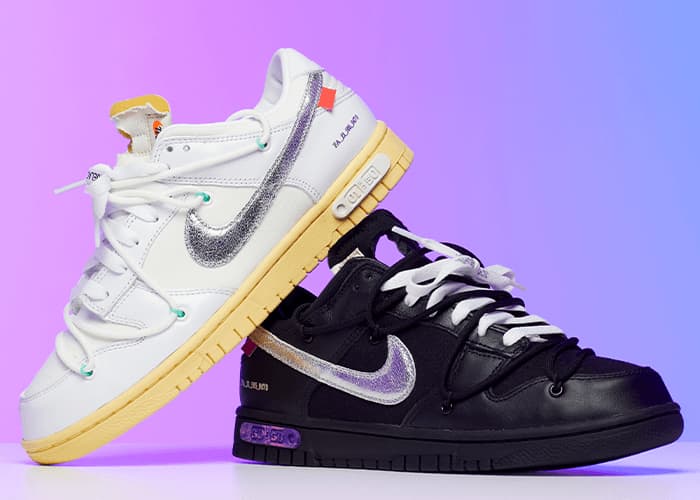
Sophia Chang is an artist and creator who splits her time between New York and LA, but she might not tell you that. She’s just not used to defining herself in those terms. “New York is all about your receipts, we don’t really need to hear about what you do,” she says. “Your work will speak for itself.” For the latest episode of Personal Space shot in late 2019, early 2020, we got the chance to talk to her about how the spaces she’s lived in have shaped how she processes her work and interacts with her communities. In New York, she doesn’t have to define herself at all, but LA has presented a different challenge when she finally made the decision to live bicoastally. “If someone were to ask me what I do for work or who I work with, I usually just say, ‘I’ve worked with everyone underneath the sun, if not one of their competitors.’” And it’s true.
Self-definition isn’t the only challenge that comes along with being bicoastal. There are also questions of inspiration, adaptability, and how a space reflects the energy of the local culture. All of these are especially acute for Sophia who grew up in Queens, where she remains for her New York base and is very different from the sunny indulgence of LA. “I never knew how much my upbringing in New York really shaped who I am until I moved to LA,” she says. “I think my biggest area of personal growth, having been bicoastal for the past like five years, is just like learning to adapt because it’s so fucking difficult for me because I’m such a New Yorker.”
And it’s certainly no surprise that the root of her identity is in New York. As she says herself, “The place that you spend your 20s in is always going to have a very special place in your heart.” Growing up in New York, she’s lived many seasons of life there, setting the foundation for every evolution that sprouted from there. The latest evolution is to split time between New York and LA, which is an expansion and constant exploration of how to thrive in different places. It’s what works for her now, but who knows what the future holds. “Life comes in different seasons, maybe this is just the season for me right now.”
*Please note: this interview has been edited for clarity and length.
StockX: When you talk about where you’re from, why do you say Queens instead of New York?
Sophia Chang: In New York, when people are like, “Oh where are you from?” Growing up you usually say by borough or part of town. Right? We usually start with that reference first. It usually depends on my audience, but I typically say Queens because then it’s an opportunity for me to talk about it.
StockX: We’re in Queens near LaGuardia Airport. The planes are coming over often. How did those sounds play on you?
Sophia Chang: I don’t even hear it. I grew up in Flushing, Queens, I grew up in a house. I was very lucky to have grown up in a house. My parents are still living there. We had a small front yard, small backyard and we were very lucky to be able for me to grow up in that environment. But we were also very close to a busy street and the Long Island railroad. And if we were just quiet enough at night you could actually hear every single stop being announced off the Long Island railroad. And I fell asleep to car alarms. Now as an adult I’m like that’s probably not a good sign. But I can literally make the sounds of the car alarm because I fell asleep listening to it so much.

StockX: Why do you maintain a bi-coastal presence?
Sophia Chang: It’s funny, growing up bi-coastal is this dream because growing up in New York or in the East Coast it’s cold, it’s gritty, it’s all this stuff. We’re sold this dream of Los Angeles, palm trees, sunshine, convertibles, the beach, and that’s all we know because of the media. I visited Los Angeles growing up, I had family there and I basically had an opportunity to be able to do a house swap with a friend. It was also an interesting point in my life. I had just done my PUMA collection. All this press, I was doing interviews, multiple interviews every day, whether it was by phone, video, photoshoot, a lot of press, press, press, and constantly talking about what I’ve done.
I realized I don’t really love talking about what I’ve done. I like to talk about what I’m doing next and all that kind of stuff, or not even talking about, I just want to do stuff. I’m tired of talking about things. I was in that space. I also got out of a long relationship. I also had been in New York my whole life and I felt like I potentially may have hit a ceiling with that big job because it was huge. It was international, it was like all this, it was like a huge thing. I got the deal maybe when I was like 22, 23 and I was just really overwhelmed by that professionally, personally, and all this stuff. I just wanted some time and space to think. I had an opportunity to do a house swap with a friend, but he was coming to New York for a few years. Maybe I can just try LA and just see where it goes.

Then I ended up staying because I ended up getting married. But work brings me back to New York. It’s a big part of who I am as a person. My parents are still here and someone said something to me this week that I thought was interesting, but he said, “The place that you spend your 20s in is always going to have a very special place in your heart.” I was like, that is so true.
Bi-coastal is, I guess it is a conscious choice. If I were to choose between the two, I’d much rather still be in New York. But it’s also one of those like, “Hey, nothing’s broken. Why change it?” And maybe stop complaining and just accept and receive and also life comes in different seasons. So maybe this is just the season for me right now.
I fought it for a very long time in the beginning. And I was very unhappy. I think my biggest struggle is community and friends, and tribe. Right? “Tribe” is a bigger extension than just friends, and it’s in-between community and friends. “Tribe” is like the people you hang out with, people who share the same values and priorities as you. And It’s a very different energy here. It’s chill, it’s west coast. It’s different. Passive-aggressive. New York, it’s aggressive, or we’re all here to just hustle. There’s this natural filtration in New York City like, “Hey we’re here with a dream. If you can make it, you can make it.”
In LA it’s a lot of faking, barely making it bullshit. And how I’ve coped is just keeping my head down and just do my job, I do my shit well, if you know me, you’ll hit me up. Head down, do my thing. I don’t have time for like social media bullshit or anyone’s bullshit. I grew up with people who have the same mentality and it’s hard to find the same community here. It’s a lot of maturing and adulting. I was fighting this whole LA/NY, I was trying to bring my New York lifestyle and this New York equation and trying to make this work in a whole different city, which is not going to be the case. So it’s also accepting that, and accepting that this is a state in my life right now, this is a season right now. Nothing’s broken, everything’s great, I’ve got this great space, work is good. Progressing in my career. And it’s just like “Shut the fuck up and just deal with it.”

StockX: What does New York offer you that LA doesn’t?
Sophia Chang: [In New York,] you’re at your pace. The world is your oyster, you are in decision of everything. Well, aside from like if the train gets stuck underground and it’s going slow, but that’s also you learning to have to release and being like, “I’m not in control of this. There’s nothing I can do.”
So versus traffic and you’re like, “I’m stuck. These people are all fucking idiots and this is why it’s messing things up for me.” So yeah, a bit of growing pains and still going through, but obviously the pace, the sense of urgency, right? In New York, we treat everything like EOD. In LA, it’s EOW, Hawaii, it’s EOM. And people, a lot of times they say, “Oh, you’re a New Yorker. Just, if you just bring that New York hustle to LA, you’ll be fine.” And I was thinking like, “Oh, okay, cool.” And what I realized was being a New Yorker in LA working is like walking down the street with your friends who are visiting from LA in New York because you’re walking so much faster than them and you’re like, “Guys, come on, hey, hey, come on.” And you’re having to wait for them to catch up. And then you guys keep moving again. But then you’re also always a couple steps ahead. And that’s what it’s like working in LA.

I’m also a no-nonsense person in New York. It’s also very no-nonsense city. I can be rude to people. Oh, I shove people out of the way all the time. Like we cut each other off. Obviously there’s some people who were being dickheads but there’s also some people who are doing it because they have to. We have not much of a choice. There’s not much space for us versus in LA there’s so much space so there’s so much room to be reckless and I think my biggest area of personal growth having been bi-coastal for the past like five years is just like learning to adapt cause it’s so fucking difficult for me cause I’m such a New Yorker and learning what my friends call it is learning to play the game in both quotes professionally and social environments here. New York is all about your receipts. We don’t really need to hear about what you do, your work will speak for itself.
In LA, what happens to me a lot of times it’s like I’m put in a position to have to give myself labels, which I have a very hard time doing and I’m still trying to grow in that space a lot. But I just stick with illustrator designer cause it’s easy. But I do so much and I also don’t want to sound like one of those crazy people who are like, “Oh I do this and I can do that and I can do this.” And it’s like everyone’s an art director. Everyone’s a creative strategist. And it wasn’t until I moved to LA where I realized I have to actually tell people who I am and what I do. So, we’ll see. I haven’t figured that one out just quite yet.

StockX: What does your New York space offer you that your LA space doesn’t?
Sophia Chang: Well, I have a lot more plants in my LA space because you can, and they stay alive. I started out my career in New York, so it obviously has a very special place in my heart. And everything you need is within a two-block radius. There’s the firehouse, there’s a post office, all the bodegas you can dream of. It’s like a freelancer’s heaven and as you can already tell, based on our backdrop. I love to create a space where I feel inspired and so I put a lot of artwork from people I’ve either worked with or I’m inspired by or friends or little things I’ve collected along the way. And it’s kind of like my wall of inspiration, but the community as well. And artists that I know and I support I want to follow. And it just helps lighten your mood. It helps keep you stay interested, engaged. And I find it very soothing and calming. Well, maybe not soothing, calming, just energetic. And that’s probably my version of soothing and calming.
StockX: There was talk earlier about how you sort of dress differently to two different cities. How do these different energies for the different cities ended up playing on you differently?
Sophia Chang: Everything [in LA] is slow, the driving drives me crazy. There’s a difference driving in LA versus New York. New Yorkers are very aggressive but for the most part, they’re aware and they’re conscious and their consciously aggressive. [In LA] it’s just aloof, reckless driving that’s very selfish. Because you’re not supposed to honk [in LA], it’s a thing. We love to honk in New York. If human beings are all in these metal containers, how are we supposed to communicate with each other? We have to be able to communicate with each other.
In New York, if I’m going into the subway, as I’m walking down the street going down the stairs I’m already going inside my wallet or the jacket sleeve to be able to get my MetroCard out so that I can move through the turnstiles and be on the train platform. Everything is this symphony. When you’re in New York if you’re on a busy street corner, it just basically created this whole new perspective and lens in terms of the city I grew up in. It’s this perfect symphony of cars, commuters, pedestrians, bikers, scooters, it’s everyone, for the most part, there’s a smooth movement that happens that’s just this flow and energy and efficiency for the city. [In LA], it’s whoever is prettiest, whoever is driving the coolest car. The priorities are very different.
StockX: How did your upbringing shape your trajectory to becoming an illustrator?
Sophia Chang: I never had a weekend because of my parents. Like 9am to 12 was Chinese school – I never paid attention so I don’t know shit – and then 12pm to 6 was like math class, science class, English class, that was the norm. And you start from age 6 all the way to 18 so you could get into a good college. But the problem is, I’m not a good test taker at all, I actually photoshopped my SAT scores. But all these other Asian kids are doing amazing. They’re doing really well and you’re scoring really poorly because I’m not a math person, really bad at reading and writing, it’s probably why I decided to pursue the arts. This bar is set so high, and there’s a level of “Am I stupid?” You’re asking yourself, “Is there something wrong with me?” And then your parents think there’s something wrong with you because you’re not excelling like all the other Asian kids that are in this after school.
I didn’t do very well.

I really wanted to attend FIT for fashion design, so I kind of cast a net pretty wide as far as applications. I got rejected from FIT and then I had a friend who had mentioned Parsons School of Design which I had never heard of up to that point. I apply, I get in, still trying to do fashion. And then I realize I hate everyone in fashion. Because first of all, it’s a private school: a shit ton of rich kids, a shit ton of international students. So they’re all wearing the new Alexander Wang, Philip Lim, comparing it to each other with their Hermes bags or some crazy nonsense, and I’m the girl from Queens who’s wearing white tees and Jordans and I’m like, “What is going on?” And that is fashion at the end of the day. Keep in mind, I’m a high school student who wanted to be a fashion designer. And it was very competitive in the sense of who looks pretty? Who’s dressed well? Obviously, if you’re studying fashion you need to learn how to sew, there’s all this other stuff that turned me off about that specific major.
And I happened to be just walking through the building, got off on the wrong floor one day, and it was the Illustration floor. And it was this eye-opening experience. We have all these glass cases to show all these different types of student work and on the Illustration floor, it was skateboards, tote bags, teeshirts, dolls that people could make, and books. And I was just like “This is what I want to do.”

StockX: Do you invite people into your space here in Queens or is it private?
Sophia Chang: No one wants to come out here. Only production people come out here.
StockX: What got you into sneakers originally?
Sophia Chang: “Sneaker culture,” “Streetwear,” “Urban,” “Hypebeast,” or “Sneakerhead,” these aren’t words that existed when I grew up. I feel like I could show you some old photos of me with cornrows. I grew up in Queens, very, very diverse, meaning it was just every color of the spectrum. Which was great. So when kids bring their home food for lunch time, it smelled crazy. There’s the Indian kid, there’s the Asian kid, and everyone’s like, “What are you eating? What is that?” And it was a fun way of sharing each other’s cultures. There’ll be Guyanese people, and they’ll be drinking boba but they’ll have their hair lined up like crazy. It was just New York energy, but also Queens is on a whole other level because it was full of first and second generation immigrants in this insane melting pot, while trying to thrive in America, in New York, and then sprinkle a shit ton of hop-hop from the 90s and rap. And so I went to Francis Lewis High School, there were a number of different bus lines, and one of the bus lines brought us over to Jamaica Ave, so I used to shop there with my friends there early on. We couldn’t afford a full velour suit, so me and my best friend would split: she’ll get the top, I’ll get the bottom, we’ll rotate.

Sneakers, Jordans, were huge. I remember when I was in High school the 17s dropped, the 8s dropped. If they dropped all the cool kids would be wearing it and that was a thing. Even with the 8s you would tie it bunny ears style. That was just our norm and you’d wear Enyce, and Mecca, all these old brands, Ecko Red, and that was our norm. And you’d be Asian, you’d be white, you’d be whatever, and it wasn’t like “Hey! Appropriation flag!” It was all we knew. We didn’t know anything outside of it.
Let’s not forget where sneaker culture really came from which is street culture – which is the street. So, for a lack of better words, black culture is obviously very popular due to the popularity of hip-hop and rap, and we’re just in this time right now where that’s super hip, that’s super in and we have mainstream access to the internet so people are just on that.
StockX: Why did you start your health and wellness platform Undo Ordinary?

Sophia Chang: I need my sleep. That’s why I created Undo Ordinary, because I need to know about my body and my sleep and eating habits and hydration and all this stuff – if I’m powering away at work, how is my body going to be able to keep up with my mind? And there’s been times, like literally this weekend, I had work to do and Sunday I was like “I’m just going to chill” and I was literally on the couch watching It’s Always Sunny… That’s what I mean by “nature,” being around other life forms, we’re so detached from our bodies. Usually, we’d be able to go outside and know what time it is because of the sun, or we’d walk down the street and know exactly what plant that is, or we’re connected to the Earth or soil or all that shit. We’re walking down on concrete, with amazing sneakers, so how can we try to bridge that gap to learn more about your body to learn about your biochemistry and find that balance between being a workaholic and someone who’s aspiring for a lot of things.
I was working a ton, my body was breaking down, I was hunched over a desk. I didn’t have my ergonomics right either, as far as my chair height, my desk height, the mouse I was using, I wasn’t using a tablet, and I was doing hours of vector work and I was just getting shooting pains in my wrist, in my low back, in my traps, and it was not normal for a 22-year-old. And so that got me into going to the gym, which got me into eating better. And I was just learning all this stuff and I was like “Wait, where is this information for people who grew up in Queens? Kids who learn street-smart stuff, where is this information for us?”

There was a huge lack of diversity in these wellness establishments and I was working with all these other creatives and so we essentially wanted to create our own platform as far as Hey let’s just see where this goes and we’ve been doing it for 7 years, we have a biannual print publication, we have a website, it just really resources and information and I like to nerd out and learn about these things and I want to share it with the world to hopefully empower them and better their understanding of their bodies.
StockX: What do you tell people who say you’re doing too much?
Sophia Chang: I don’t know. I don’t really say anything. The unfiltered, really blunt frank version of me would be like, “Just because you can’t do it doesn’t mean I can’t.”
But I don’t say that, that’s not very nice.
So I just smile and nod.








